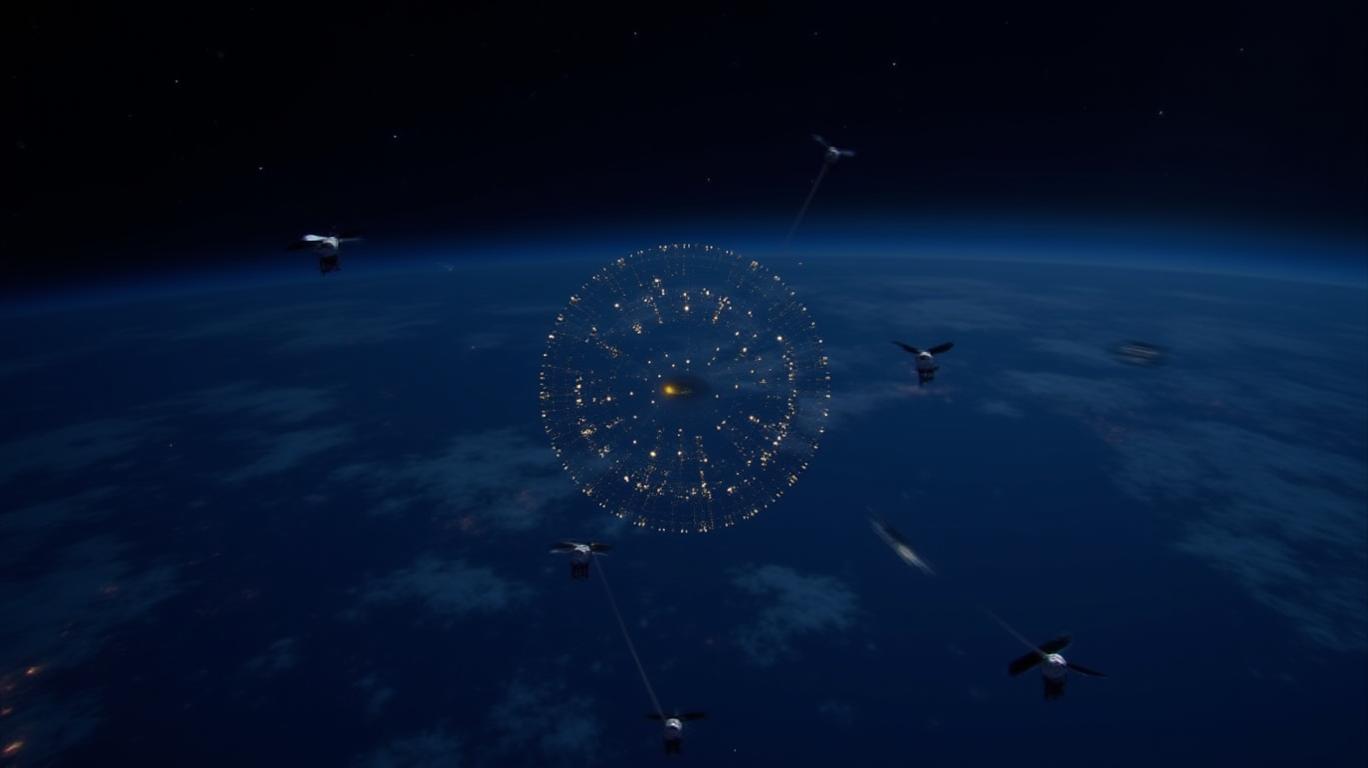Starlink's Cosmic Expansion: Why SpaceX is Set to Dominate Satellite Internet Forever
The race for global internet supremacy is no longer confined to Earth. As of May 2025, SpaceX's Starlink constellation has already launched 7,135 satellites, with 7,105 operational, and plans to scale to 42,000 satellites—a milestone that would grant near-universal coverage. This isn't just a tech arms race; it's a gold rush for investors. Here's why Starlink's scalability and market dominance position it as the Amazon of space, and why now is the time to act.

The Scalability Engine: Why Starlink is Unstoppable
SpaceX's ability to scale is unmatched. Its Falcon 9 rockets achieve 24+ reuses per booster, slashing launch costs to $500,000 per mission—a fraction of competitors. In May 2025 alone, two launches added 46 satellites, with another 46 planned by month's end. This cadence, combined with Starlink V2 Mini satellites (30% larger and 1.5x faster than earlier models), ensures relentless growth.
The Direct-to-Cell (DTC) tech, now deployed on 234 satellites, is a game-changer. Partnering with T-Mobile, Starlink's beta service already covers 500,000 sq mi of U.S. dead zones. By 2025, this will expand to voice and IoT services, turning smartphones into universal communicators.
Starlink's subscriber base has surged to 2.3 million, with enterprise contracts (e.g., maritime, defense) driving $10B annual revenue by 2025—a 300% increase from 2023. This is a rocket on a trajectory.
Market Dominance: Outpacing Rivals and Regulations
Starlink's lead is unassailable. Competitors like Amazon's Project Kuiper (3,200 satellites by 2029) and OneWeb (1,200 satellites) are decades behind. Why?
- First Mover Advantage: Starlink is already operational in 100+ countries, with 50% global market share. Its network latency (now 33ms in the U.S.) is 30% faster than rivals, making it indispensable for gaming, telemedicine, and enterprise.
- Technical Superiority: Starlink V3 satellites, launching this year, will cut latency to 20ms—matching fiber-optic speeds.
- Strategic Partnerships: T-Mobile's hybrid space-terrestrial network (the first of its kind) and FAA trials for air traffic control systems prove Starlink's ecosystem is expanding beyond broadband.
Even regulatory hurdles, like EU spectrum delays, are manageable. SpaceX's proactive debris mitigation (deorbiting malfunctioning satellites) and data-sharing with astronomers have eased environmental concerns.
The Risks? Overblown. The Rewards? Infinite.
Critics cite space debris and regulatory delays. But Starlink's satellites are designed to burn up in 5 years, and its transparency with regulators has softened opposition. Even in Italy—a regulatory roadblock—the company is negotiating.
The real risk? Missing the boat. Starlink's $10B revenue target by 2025 is conservative. With 10,000+ enterprise customers (including militaries and airlines), and a $599 terminal price dropping further, the market is primed for explosive growth.
Investment Thesis: Buy Now, or Watch the Rocket Launch Without You
Starlink isn't just a satellite company—it's the backbone of the future internet. Here's how to profit:
- Direct Stake: SpaceX's valuation is $100B+, but it's not public. Look to TSLA (Tesla)—Musk's cash engine—whose stock could surge as Starlink's success fuels broader innovation.
- Partnerships: T-Mobile's $TMUS stock is tied to Starlink's DTC rollout. Similarly, aerospace suppliers like MAXAR (LSPE) benefit from SpaceX's launch demand.
- Long-Term Play: Starlink's 42,000-satellite vision ensures dominance for decades. This isn't a fad—it's a generational shift.
Conclusion: The Sky's the Limit—Literally
Starlink's scalability and market dominance are undeniable. With $10B in annual revenue by 2025, and a constellation that could grow to 42,000 satellites, this is the Amazon of the skies. The question isn't whether to invest—it's how quickly you can act.
The next decade will be defined by who controls the sky. SpaceX is already in the cockpit. Don't miss the launch.
Act Now. The future is orbital.

Comments
No comments yet